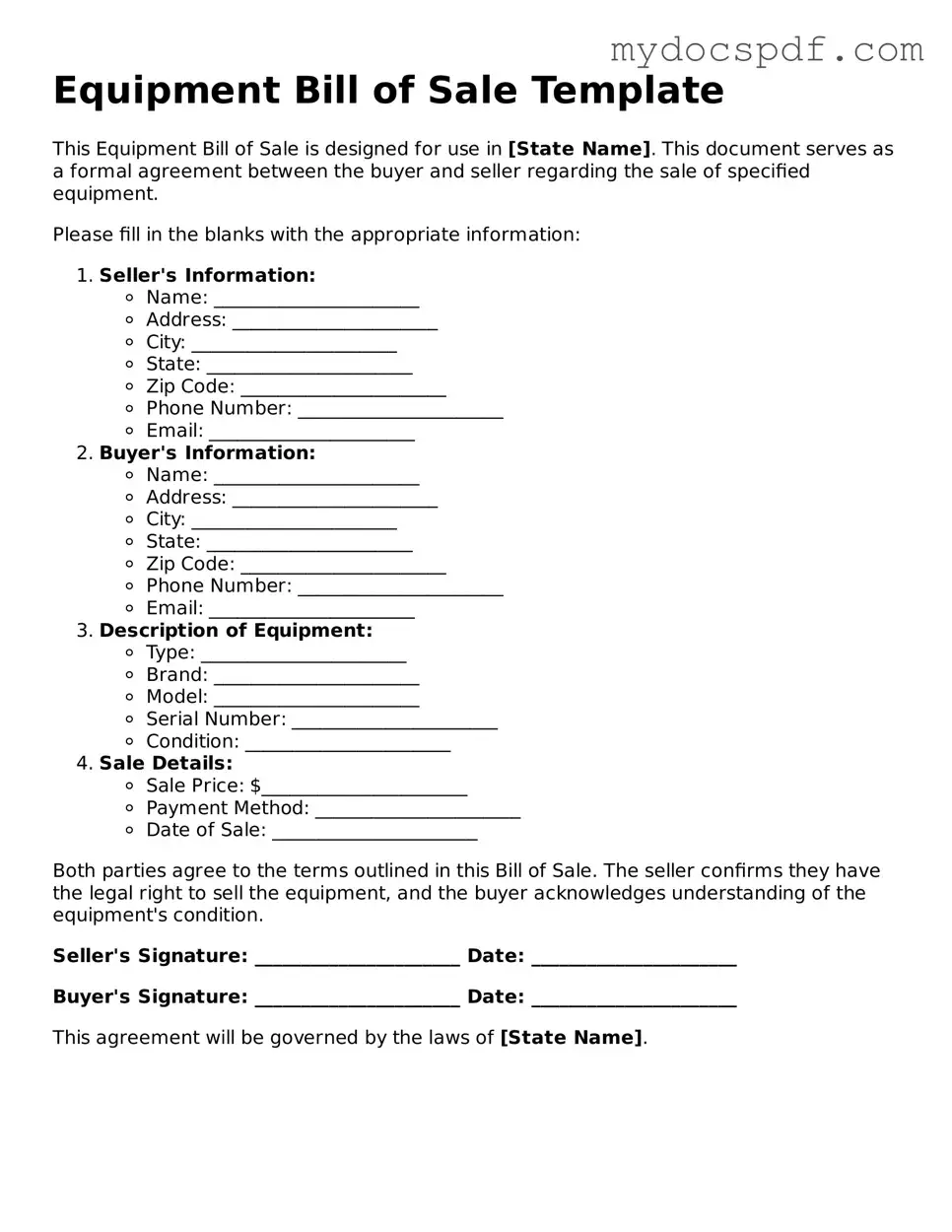Equipment Bill of Sale Template
This Equipment Bill of Sale is designed for use in [State Name]. This document serves as a formal agreement between the buyer and seller regarding the sale of specified equipment.
Please fill in the blanks with the appropriate information:
- Seller's Information:
- Name: ______________________
- Address: ______________________
- City: ______________________
- State: ______________________
- Zip Code: ______________________
- Phone Number: ______________________
- Email: ______________________
- Buyer's Information:
- Name: ______________________
- Address: ______________________
- City: ______________________
- State: ______________________
- Zip Code: ______________________
- Phone Number: ______________________
- Email: ______________________
- Description of Equipment:
- Type: ______________________
- Brand: ______________________
- Model: ______________________
- Serial Number: ______________________
- Condition: ______________________
- Sale Details:
- Sale Price: $______________________
- Payment Method: ______________________
- Date of Sale: ______________________
Both parties agree to the terms outlined in this Bill of Sale. The seller confirms they have the legal right to sell the equipment, and the buyer acknowledges understanding of the equipment's condition.
Seller's Signature: ______________________ Date: ______________________
Buyer's Signature: ______________________ Date: ______________________
This agreement will be governed by the laws of [State Name].
